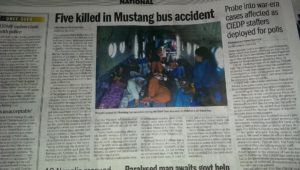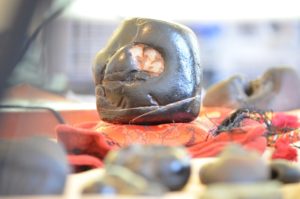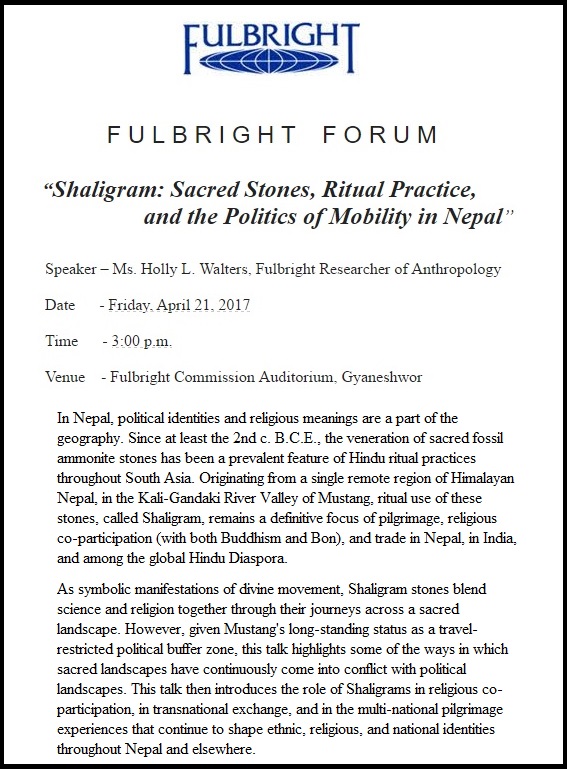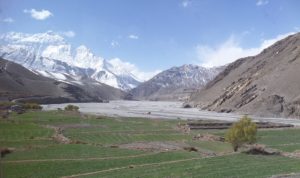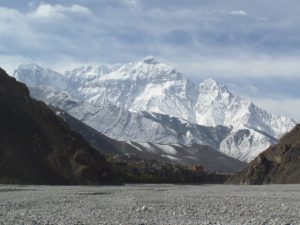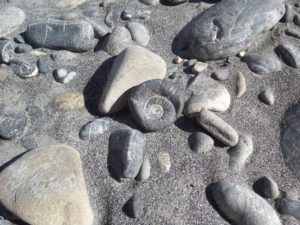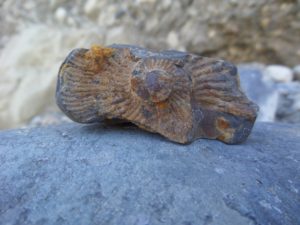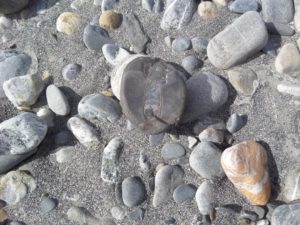Planning a pilgrimage to the Kali Gandaki can be exceptionally tricky if you are unfamiliar with the region or with traveling in Nepal in general. But because the most common questions I get tend to relate to the logistics of actually going on Shaligram pilgrimage, I’ve compiled a handy short list of considerations below. Think of this as the first part of a brief “Guide to Getting There.â€
Total travel days: Between 7 – 10
Total days searching for Shaligrams: 3 – 4 (with trip to Muktinath included)
1. If possible, arrange your travel to Mustang (where the Kali Gandaki flows) prior to arriving in Kathmandu. This can be done through a Nepali travel agent or trekking company easily enough and if anyone is especially interested, feel free to comment on this post for more information.
2. If you are arranging travel to Mustang after you arrive in Kathmandu, you should start with air tickets. From Kathmandu, you must fly first to Pokhara and then to Jomsom, where the pilgrimage route begins. I highly recommend doing this with either Tara Air or Buddha Air as they are the most reliable and are not as prone to random cancellations as some of the other airlines are (you will have to walk or take a taxi to the local ticket office to purchase tickets).
The second thing to keep in mind is that these flights tend to only go early in the mornings (due to weather) so you will likely need to plan for at least two days of travel to get to Mustang. Additionally, if you are traveling during monsoon, expect delays and cancellations (some which can run several days at a time during the height of the rains). PLEASE NOTE! Do not anticipate being able to get from Kathmandu to Jomsom on the same day. While theoretically possible if all your flights work out, it is more likely you will end up with at least one day in Pokhara.
If you plan to travel to Mustang by jeep or bus (from either Kathmandu or Pokhara), you can do so from any one of the many bus or jeep stations in either city. Private jeeps are expensive though, and can run a few hundred dollars (US) for the entire trip, which can be anywhere from 7 – 9 hours or up to 14 hours by bus. Buses are cheap however, and can get you to Jomsom for about $14 dollars (US).
3. Remember that you will need to get two permits to access Mustang, the TIMS permit and the ACAP permit. Both of these permits are available from the Immigration Office in Kathmandu or at the Immigration and Trekking Counter in Pokhara. The total fee is around $25.
4. The final altitude for reaching Muktinath is over 4000 meters. At this altitude, you will acutely notice the thinness of the air and, depending on your personal make-up, you may find it difficult to breathe or that you are tiring easily. This is to be expected, which is why it is important to plan at least a few extra days in case of altitude sickness or travel delays. If you are able, stop by any one of the many pharmacies in Kathmandu or Pokhara for a couple of doses of mountain medications to keep on hand I would recommend it. Just in case. Additionally, if possible, plan for at least one over-night in Jomsom. The elevation between Kathmandu and Jomsom is reasonably extreme (Jomsom is at around 3,100 meters), so if you are not sure how you will react to the altitude, be sure to give yourself enough time to acclimate.
5. It is possible to find Shaligrams in the Kali Gandaki just north of Jomsom. If you are prepared to trek, you can leave Jomsom early in the morning and follow the route of the Kali Gandaki towards Kagbeni village. Kagbeni is about 2 – 3 hours walk north if you follow the road straight but many pilgrims use this opportunity to find Shaligrams in the river as they go. If you choose to do this, plan for around 4 – 5 hours of walking to reach Kagbeni. Otherwise, you can either stay in Jomsom and look for Shaligrams north of the town (on the far side of the river, past the jeep stand and main gompa) or take a bus (in the morning only) to Kagbeni and stay there while looking for Shaligrams. Either place works, though I have noticed that the quality of the Shaligrams I have found outside of Kagbeni tends to be better than outside of Jomsom.
6. Lodging in Mustang is fairly easy to come by. There are guesthouses and trekking lodges throughout Jomsom and Kagbeni (as well as near Muktinath) that offer reasonable rooms and meals (around $15 a night in Jomsom, $8 – $10 a night in Kagbeni and Muktinath). If you have specific dietary restrictions, however, you may have to plan ahead before you arrive. Most guesthouses have vegetarian or Vaishnava food available but the kitchens are not separated from the preparation of trekking meals. This means that meat, eggs, and other animals products are prepared on the same premises as everything else. There are a few houses and dharamsalas that specifically cater only to pilgrims here and there but you will likely need the help of a local travel agent to help you book them. If all else fails, consider bringing some prepared food with you before you leave.
7. Guide services are generally not necessary unless you plan to do more extensive trekking in the Annapurna region, such as the Thorong La Pass. If you are just planning on Shaligram pilgrimage (Jomsom to Kali Gandaki to Muktinath and then back to Jomsom), you won’t need a full mountain guide.
8. Finding Shaligrams in the river can be tricky but it’s not impossible. For most people, even on their first pilgrimages, they are able to find between 6 and 10 Shaligrams over the course of a few hours. The best advice I can offer is to focus on areas of the river where the water has recently passed. This means along the edges of the streams that flow through the main river bed as well as along the rocky areas where the water has recently moved over. Shaligrams will have a distinct inky black color in the water (or when wet) that helps pick them out from the surrounding silt.
9. The typical pilgrimage route is from Jomsom to Kagbeni (1 day), Kagbeni to Muktinath (1 or 2 days), Muktinath to Jomsom (1 day – with flight or bus leaving the following day). For this reason, try to plan at least 4 or 5 days in Mustang aside from 2 days to get to Jomsom and 2 days to get back to Kathmandu.
10. If you are traveling to Kali Gandaki during the summer months (June, July, August) the weather tends to be fairly mild: 10 – 12 C (50 F) during the day, 5 – 7 C (40 F) at night. During the fall and winter, however, it can get quite cold in the Himalayas. Always look up the expected temperatures for Mustang before you plan on arriving so that you can be sure to pack warm enough clothes.
Ok, anything I forgot?



